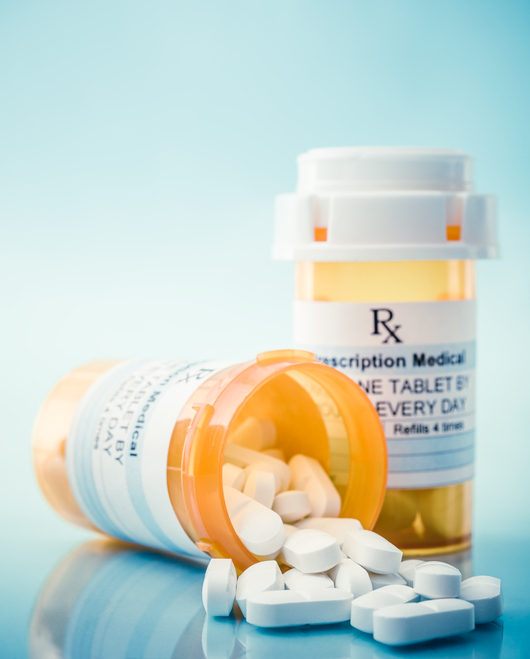In a trial starting Tuesday, lawyers for Oklahoma Attorney General Mike Hunter will argue that the marketing practices of Johnson & Johnson are to blame for widespread drug addiction that has devastated the state.
The case is the first to go to trial of around 2,000 lawsuits brought by states, local municipalities and Native American tribes against pharmaceutical companies over their alleged role in fueling the opioid epidemic.
The outcome is likely to help shape the sprawling litigation nationwide, as both sides look for a win to use as leverage in broader settlement talks. Cameras televising the action will heighten national attention on the courtroom in the college town of Norman, Okla.
Hanging over the trial will be the absence of a company that initially formed the crux of the state’s case: OxyContin maker Purdue Pharma LP. The company and its owners, the Sacklers, agreed in March to pay $270 million to settle the claims and avoid trial.
Another drugmaker expected to be in the trial, Israel-based Teva Pharmaceutical Industries Ltd. , settled Sunday for $85 million without admitting to wrongdoing.
Oklahoma is set to argue that Johnson & Johnson’s alleged deceptive marketing campaign created a “public nuisance” that will cost the state as much as $17.5 billion to abate, including through programs to fight drug abuse and addiction. The company argues public-nuisance law, more often used for property disputes, is being invoked improperly in an attempt to hold it accountable.
Oklahoma filed its lawsuit in the summer of 2017 in a wave of similar actions brought by states hard-hit by the opioid epidemic. Oklahoma’s opioid-related overdose deaths exceeded the national rate for years, peaking in 2009 at 15.5 deaths per 100,000 people, according to the Centers for Disease Control and Prevention. In court filings, Oklahoma says that in some years, the number of painkiller prescriptions dispensed eclipsed the number of state residents.
The hundreds of opioid cases broadly allege drug companies helped create a culture of opioid dependence by pushing their drugs for wide-ranging pain while playing down the risks of addiction. Public-health advocates say prescription-pill abuse gave way to an influx of deaths from heroin and illegal fentanyl.
After Purdue settled, the state focused its attention most on Johnson & Johnson, a pharmaceutical and consumer-products juggernaut that is already fending off thousands of claims over the safety of its signature baby powder, pelvic mesh devices and other medical products.
Oklahoma has zeroed in on two businesses the company owned for decades that produced narcotic raw materials and active pharmaceutical ingredients such as codeine, oxymorphone and fentanyl that other drugmakers used to make painkillers. The state says the ingredients businesses, which Johnson & Johnson sold by 2016, make it a “kingpin.” A company lawyer says the state “ignores basic facts” and that the businesses were tightly regulated.
Johnson & Johnson’s opioid portfolio also includes a fentanyl patch, Duragesic, used for chronic pain. It sold its interests in another powerful painkiller, Nucynta, in 2015.
Teva and its subsidiaries make generic opioid painkillers, including a generic version of OxyContin, along with two branded drugs used for cancer pain. The company has argued that it didn’t market its generic drugs and said Sunday it “has not contributed to the abuse of opioids in Oklahoma in any way.”
The office of Mr. Hunter, Oklahoma’s attorney general, said Sunday that Teva’s $85 million settlement “will be used to abate the opioid crisis in Oklahoma” and that details will be announced in the coming weeks.
Oklahoma officials slimmed down their case in the run-up to trial, leaving only the public-nuisance claim, and agreed to have it heard by a judge and not a jury.
Public-nuisance law, Johnson & Johnson is likely to argue at trial, is more often used to mediate disputes over things such as loud businesses, illegal dumping and overgrown hedges. “Public nuisance is not and has never been a magic bullet for social problems allegedly traceable to the sale of goods and services,” Johnson & Johnson lawyers wrote in an earlier failed bid to dismiss the case.
Adam Zimmerman, a professor at Loyola Law School, said state attorneys general and local municipalities have for years sought to use public-nuisance law to go after harmful products, with mixed success in court. Part of the controversy, he said, is that as more laws get passed “that play a role in regulating when businesses go too far, it’s harder to justify using this open-ended form of nuisance law to regulate behavior.”
A judge in North Dakota recently threw out that state’s opioid lawsuit against Purdue, ruling that a similar public-nuisance argument failed because the law hasn’t been extended to the sale of goods.
Johnson & Johnson will also argue that Oklahoma has presented no evidence that its marketing led to any opioid deaths in the state. The state didn’t point to a single doctor who wrote an unwarranted prescription, they say, or offer any statistical proof that the company is at fault.
Oklahoma state court Judge Thad Balkman has set aside two months for the trial. He will hear testimony culled from more than 200 depositions and millions of pages of documents exchanged in the case.
The state is expected to suggest Johnson & Johnson targeted children in its opioid marketing. The company denies this, saying it supported a campaign to help adolescents cope with pain that didn’t push any drugs and another to help teens understand opioid risks.
Witnesses are expected to include former addicts or family members of addicts, company executives, local doctors and experts in areas such as medicine and economics.













